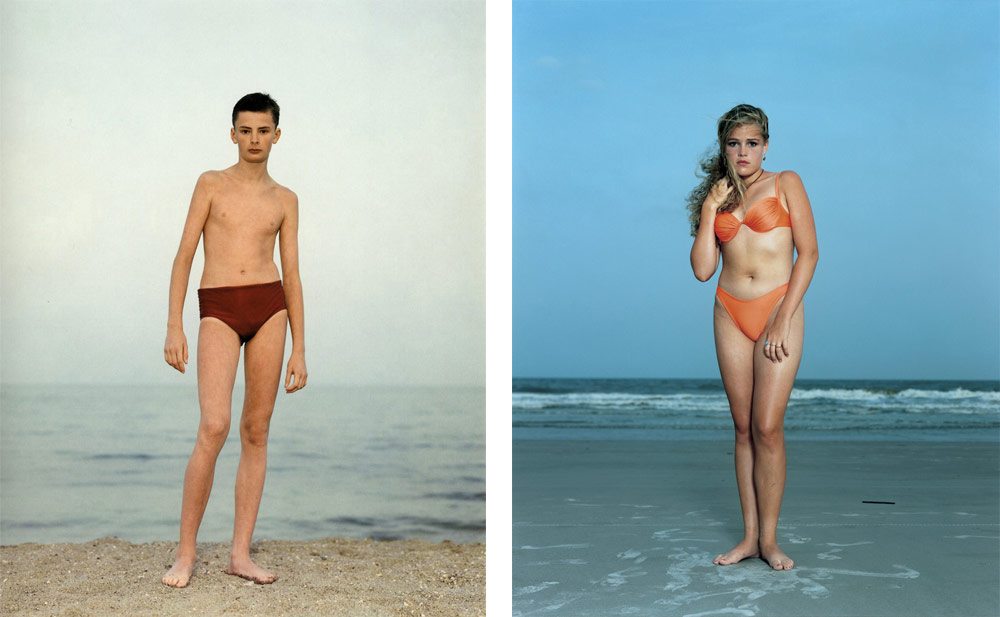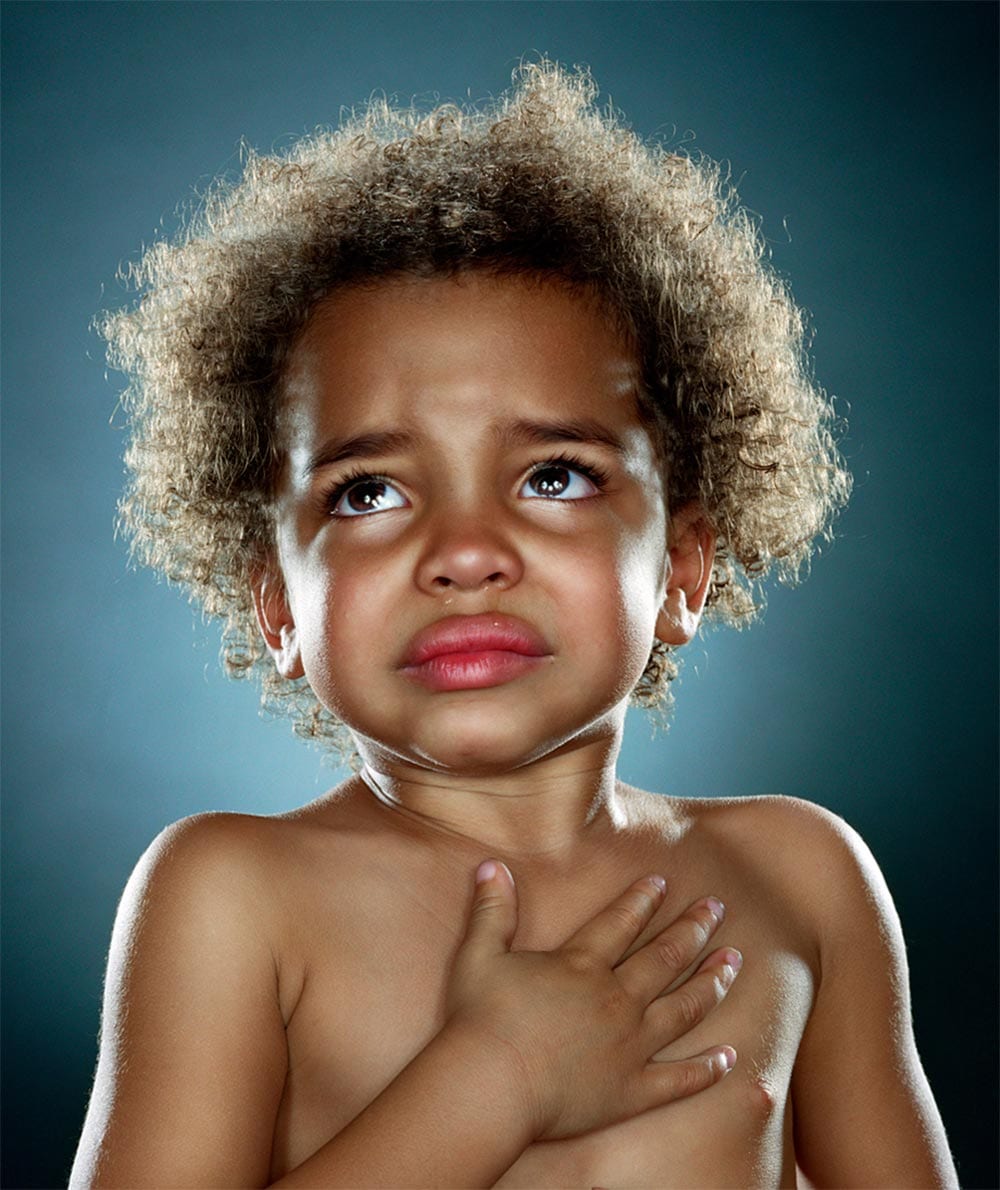INSPIRATION
Finding Faces in the Infinite Crowd
INSPIRATIONAL PORTRAIT PHOTOGRAPHY
Pushing the boundaries of portrait photography
Since the middle of the 19th century – where photographic techniques became cost-effective enough to compete with painting – portrait photography has been a mainstay of the photographic world. From Yousuf Karsh’s iconic black and white images of the world’s most recognised figures (Winston Churchill, Salvador Dali, Albert Einstein, Mother Teresa and Martin Luther King to name a few), via Steve McCurry’s faces of people encountered on assignment around the globe (his remarkable ‘Afghan Girl’ being the most recognisable), to Mario Testino’s faces of fashion, the best portraits can reveal something of that individual, and explore the depths of human emotion.
Of course with portrait photography being so ubiquitous, it is also riddled with cliché (“The eyes are the window to the soul” and suchlike). It takes something special to transcend these well-worn tropes, and to show the viewer something new and resonant.
This list explores a few of my favourite photographers who pushed or are pushing portrait photography in interesting, unprecedented directions. It’s deliberately provocative, and a few of the most likely candidates are missing – Richard Avedon, Helmut Newton, Mary Ellen Mark and names above to mention a few – but the list isn’t meant to be exhaustive, and these artists are already well-documented in lists online. I hope you find a wealth of inspiration, and a few surprises among these names.
(Banner image © Brent Stirton)
Katy Grannan (United States)

Images © Katy Grannan
Portrait photography is about finding a connection between subject or viewer, or perhaps in other words, about bring their world into ours for however brief a moment of time.
Katy Grannan’s Boulevard Series is this, and so much more. Photographed on the sun-bleached streets of Los Angeles and San Francisco, she would approach passers-by, and photograph them against stark white walls, compensating them for their time – a short-lived, on-the-spot collaboration. Her images offer a fleeting glimpse into their lives, but more than being about the individual, they’re about the individuality of us as human beings, with that white wall symbolising the common fate that awaits us all.
As she explains it, they describe that moment of “strangers meeting for the first time, each taking a leap of faith by trusting an unfamiliar person and an unexpected encounter”. Perhaps this is why she titles each image ‘Anonymous’. Only a moment after the click of the shutter, that person is gone forever – swept back up into the tumult off the world.
See also: Bruce Gilden
Brent Stirton (South Africa)

Images © Brent Stirton
Stirton is one of the most prolific documentary and photojournalistic photographers in the business, travelling on average for 9 months of the year covering conflict, health and environmental issues.
Throughout the years he has taken hundreds of portraits in the field, often of life’s displaced, disaffected and ignored characters (wounded war veterans, sex workers, cancer sufferers and Indian albinos to name a few), and they never fail to have deep emotional resonance. He treats his subjects with dignity, and plays subtle games with light, colour, placement and setting to bring out the most powerful stories and sentiments. Looking through his body of work, you realise that he is drawn to life’s survivors, and their defiance fills every frame.
JR (France)

Image © JR
If the remit for this post is one of photographers pushing portraiture in new directions, then JR certainly fits the bill – although his multi-media work goes well beyond pure photography.
JR is known for his distinctive large-scale photographic works that he flyposts in urban environments or on the exteriors of buildings – in his words the “largest gallery in the world”. From his beginnings as a teenage graffiti artists, he now describes himself as a ‘photograffeur’ – combining photography with the raw artistic expression and cheap scaling techniques (black and white photocopies) of the graffiti and street art scene.
His work goes way beyond aesthetic expression though, shedding a light on global issues of migration, racism, freedom and sexism – in a style that’s truly his own. His huge-scale canvasses can often only be interpreted from a distance – for example his ‘Women are Heroes’ piece where he pasted the faces and eyes of local women onto the roofs of favela buildings in Rio de Janeiro, only visible from above by satellite or helicopter. I’ve always seen this as a metaphor for our global problems. We suffer from not being able to ‘see the wood for trees’, needing to step back and see the wider perspective, in a way that we as humans struggle to do.
Phillip Kremer (United States)

Images © Phillip Kremer
I’ll be the first to admit that this is a pretty out-there choice. His highly deranged, digitally-morphed portraits have amassed a cult following and a certain online infamy (his Instagram account has been shut down three times to date), and they continue to amuse, baffle and repulse in equal measure.
Kremer finds portraits on Google Images – an infinite repository of inspiration – and manipulates them in freakish ways, removing and replacing features to create something that, in his own words “causes discomfort to myself and others”. And it seems that nobody is safe – celebrities, politicians (Trump is a recurring character) and everyday people have all been subject to his outlandish manipulations.
Detractors might call his work tacky, ugly and brash, but maybe that’s the point. As a reaction to the world of social media they inhabit – one filled with vanity, boasting and superficial beauty, along with a limitless supply of memes – they’re relevant and provocative, as well as being twisted and unique.
See also: Charlie White, Asgur Carlsen
Rineke Dijkstra (The Netherlands)
–

Images © Rineke Dijkstra
“In the end, it’s the individual that I’m after.”
Dutch photographer Dijkstra has spent a career photographing adolescents – capturing penetrating and vulnerable portraits of their transitions from childhood to adulthood.
Her most famous work is perhaps the one for which she rose to prominence, ‘Beach Portraits’, in which she took life-size, colour photographs of teenagers on the beaches of the United States, Britain, Croatia, Poland and Ukraine. Those images have a psychological intensity – her subjects centre-frame, against minimal backgrounds are presented in their self-conscious awkwardness. “A moment of truth” as she calls it.
Her work has been likened to the Old Dutch Masters, and some of her images do indeed resemble paintings. There’s a formalism and simplicity, the frank stares of her subjects and their generic backgrounds, providing a focus on the ‘who’ rather than the ‘where’. There’s a vagueness and tautness reminiscent of brushstrokes. For a medium so focussed on the ‘instant’, she imposes a slowness to her work, which is refreshing and singular.
Bear Kirkpatrick (United States)

Images © Bear Kirkpatrick
The brilliantly named Bear Kirkpatrick produces mesmerizing and creative portraits, rendered in extraordinary detail.
He layers his images with fantastical props and translucent paintings by the Old Masters, mixing the modern with the historical. Space, texture and history combine to create something quite singular. He puts his style and technique down, in part, to a bout of deafness as a small child, replacing what he lost in auditory ability for an increase in visual awareness.
His images are dense, but also pure, with each of his subjects staring openly into the camera. He explains it in a wonderful turn of phrase: “Revealing by concealing”. He’s a fine art photographer, in the truest sense of the term.
Jill Greenberg (United States)

Images © Jill Greenberg
Greenberg has taken countless wonderful portraits, and is well known for her anthropomorphic portraits of animals, where they exhibit uncannily human traits. It is her series ‘End Times’ however that has caused the most stir around the world, unfairly steeped in controversy.
For ‘End Times’, Greenberg employed a simple but powerful metaphor – crying toddlers, gently provoked by the simplest of things, to reflect her frustration with the American politics of the Bush era – waging war abroad, ignoring the environment and blocking important medical research. If only these children knew the world they’d be growing up into, they may well cry in just the way depicted.
She gently provoked these emotions by taking lollipops away from the children, and was unfairly lambasted online for ‘child cruelty’. For me it only strengthens the message she conveys – that people could get so uptight about this with all of the other, far greater wrongs taking place around them.
Her work has such a distinctive, editorial sheen that there’s a phrase for it – ‘The Jill Greenberg Effect’ – and many blog posts have popped up examining her techniques and how they can be recreated in Photoshop. She says however that 95% of the effect is achieved in-camera, through her unique lighting set-up and ratios, and the images only require minimal re-touching (she often posts her raws to social media to prove as much). In a world where a ‘filter’ can be slapped onto an image and achieve an instant, cheap and superficial atmosphere, it’s refreshing that photographers like Greenberg can achieve something so unique and singular. She puts it beautifully herself: “People always ask what filter I use, but the filter is me”.
